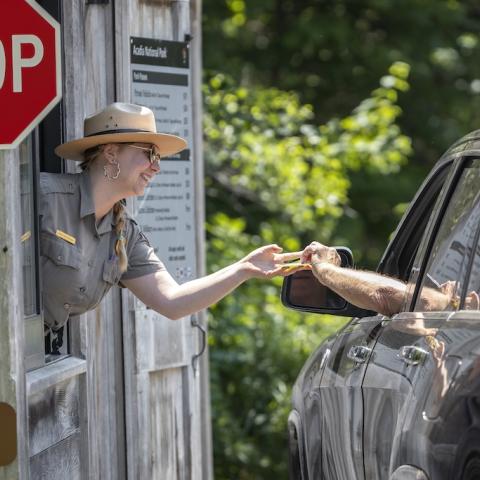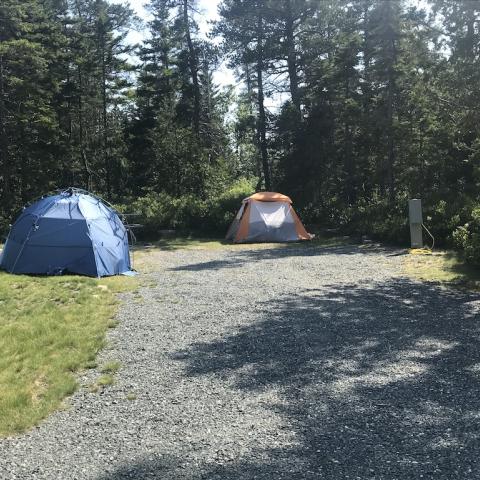
This composite, panoramic view from Flying Mountain in Acadia National Park includes a representation of what a typical 195-foot cell phone tower on the ridge might look like atop Freeman Ridge in Southwest Harbor. The top of the tower is situated where the top balloon appeared in the image above. The width and design of any actual tower might vary/Friends of Acadia, Earl Brechlin
ACADIA NATIONAL PARK -- A proposed cell phone tower will have significant impact on national historic resources, including views from multiple mountain summits and historic hiking trails in Acadia National Park, within a 4-mile radius.
In early March, a vertical string of 4.5-foot-diameter red balloons was floated at the approximate location and height of a proposed 195-foot cell tower off Buttermilk Brook Road on Freeman Ridge in Southwest Harbor. Photos taken during the test by Friends of Acadia provide a graphic representation of what the proposed tower would look like to hikers.
The public was invited to view the balloons and comment on the impacts.
Acadia’s trail system has been deemed eligible for listing on the National Register of Historic Places in large part because the trails were carefully sited to open Acadia’s scenery and the surrounding landscapes broadly to recreationists. Friends of Acadia took the opportunity to assess the potential impact of the proposed cell tower on two of Acadia’s trails, the Beech Mountain Loop and the Flying Mountain trail.
The greatest impact was observed on the Flying Mountain Trail, where approximately 130 feet of the cell tower would be silhouetted against the sky above the Freeman Ridge tree-line.
Friends of Acadia is concerned that the proposed 195-foot cell tower would diminish the views from Flying Mountain and other trails, and therefore would harm the historic value of the trails. FOA provided comments to the consultants working on the visual assessment for BRT Group LLC, and copied representatives from the Federal Communications Commission, the Maine Historic Preservation Commission, and the National Park Service.
While this stage of the process is focused on impacts to historic resources, there may be future opportunities to comment on the overall impacts of the proposed tower on the environment and community. Friends of Acadia will keep you informed of these opportunities. For more information about the process, visit https://friendsofacadia.org/news/cell-tower/.
Contact Stephanie Clement at [email protected] or 207-288-3340.




 Support Essential Coverage of Essential Places
Support Essential Coverage of Essential Places







Comments
I hope the tower is built. Cell service is not reliable on the island.